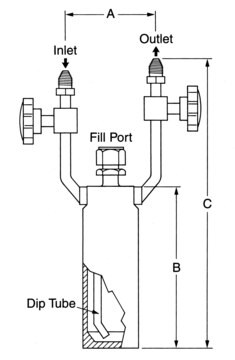687502
Titanium(IV) isopropoxide
packaged for use in deposition systems
Synonyme(s) :
TTIP, Tetraisopropyl orthotitanate
About This Item
Produits recommandés
Pureté
99.999%
Forme
liquid
Pertinence de la réaction
core: titanium
reagent type: catalyst
Indice de réfraction
n20/D 1.464 (lit.)
Point d'ébullition
232 °C (lit.)
Pf
14-17 °C (lit.)
Densité
0.96 g/mL at 20 °C (lit.)
Chaîne SMILES
CC(C)O[Ti](OC(C)C)(OC(C)C)OC(C)C
InChI
1S/4C3H7O.Ti/c4*1-3(2)4;/h4*3H,1-2H3;/q4*-1;+4
Clé InChI
VXUYXOFXAQZZMF-UHFFFAOYSA-N
Vous recherchez des produits similaires ? Visite Guide de comparaison des produits
Description générale
Application
Mention d'avertissement
Warning
Mentions de danger
Conseils de prudence
Classification des risques
Eye Irrit. 2 - Flam. Liq. 3 - STOT SE 3
Organes cibles
Central nervous system
Code de la classe de stockage
3 - Flammable liquids
Classe de danger pour l'eau (WGK)
WGK 1
Point d'éclair (°F)
105.8 °F - Pensky-Martens closed cup
Point d'éclair (°C)
41 °C - Pensky-Martens closed cup
Équipement de protection individuelle
Eyeshields, Faceshields, Gloves, type ABEK (EN14387) respirator filter
Certificats d'analyse (COA)
Recherchez un Certificats d'analyse (COA) en saisissant le numéro de lot du produit. Les numéros de lot figurent sur l'étiquette du produit après les mots "Lot" ou "Batch".
Déjà en possession de ce produit ?
Retrouvez la documentation relative aux produits que vous avez récemment achetés dans la Bibliothèque de documents.
Les clients ont également consulté
Articles
Atomic layer deposition (ALD) showcases innovation in novel structure synthesis, area-selective deposition, low-temperature deposition, and more.
Atomic Layer Deposition (ALD) technology ensures uniform coating on complex 3D surfaces with precise chemisorption cycles.
Nanocomposite Coatings with Tunable Properties Prepared by Atomic Layer Deposition
Continuous efficiency improvements in photovoltaic devices result from material advancements and manufacturing innovation.
Notre équipe de scientifiques dispose d'une expérience dans tous les secteurs de la recherche, notamment en sciences de la vie, science des matériaux, synthèse chimique, chromatographie, analyse et dans de nombreux autres domaines..
Contacter notre Service technique











